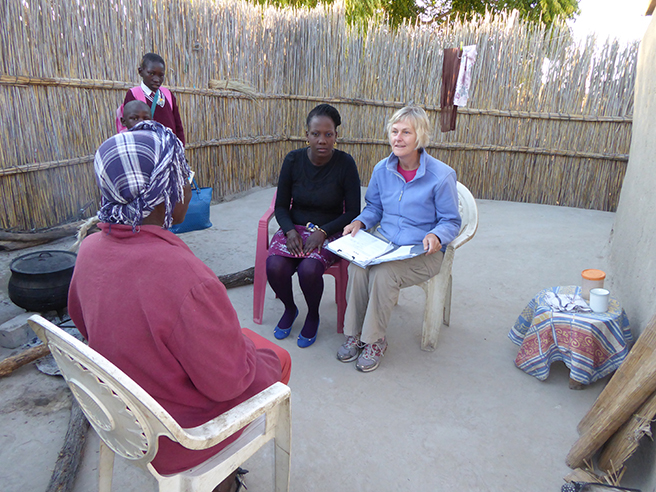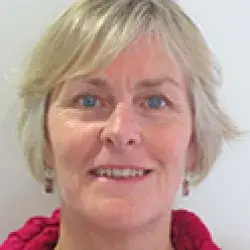Adventures in Research

Life and research in the villages
As I mentioned in my last blog, the last two villages that I am surveying are Satau and Parakarungu in Botswana. As these villages are so far from Kasane where I am staying, Georginah’s (my translator) mother has kindly offered to let us stay at her house for a few days to save me doing the long drive back and forth.
Once you leave Kachikau village it’s a dirt road all the way to Satau and Parakarungu and the landscape changes dramatically. Here, it’s flat and sandy with numerous palm trees. During the rainy season all this area floods and that’s where everyone plants their crops. Our first stop was Satau where we introduced ourselves to the village chief at the kgotla. He kindly gave us permission to carry out our survey work which did over the following two days. We left Satau around 3 p.m. so we had plenty of time to get to Georginah’s mother’s house which is in the village of Parakarungu and settle in before it got dark. Their house is a series of three small mud brick huts some with corrugated iron roofs and others are thatched. These huts are enclosed in a corral made of reeds that Georginah’s mother cuts and replaces every second year. There is no electricity, and water is from a public tap about 100 metres from the house. For cooking they use firewood over an open fire. When I arrived, Georginah and her mother moved a double bed from one hut into another hut and made it up with a mosquito net. Georginah then set about preparing dinner which was delicious—pan-fried Chobe bream ( caught by her brother that day) with the traditional papa made of ground maize flour mixed with water into a thick porridge.
After dinner Georginah kindly heated some water for me to have a bath—this comprised of a tin bath within which was a bowl of warm water—you stand in the tin bath and wash yourself. It felt so good as it’s very hot, dry and sandy there. Later as we were preparing for bed by candlelight Georginah said looking at the double bed: “ I hope we’ll be warm enough. It then dawned on me that she and I were going to be sharing the bed! In Africa there is a very different attitude to personal and private space and sharing a bed like this is not unusual.
The following morning we dropped Georginah's two children (who live with her mother) off in style at the local school. I expect they got a lot of cache from a lift to school! Normally they walk about two kilometres. We returned to Satau to complete our surveys and then moved onto Parakarungu village. Over the next couple of days we completed our surveys in that village and we able to enjoy some relaxation one afternoon when Georginah’s brother Joseph who is a keen fisherman took us to a local lake and out for a ride in a traditional dugout canoe called a mokoro. He stood at the back of the mokoro and poled us across the lake which was serene and beautiful with masses of water lilies and birdlife. Staying with Georginah's family was a unique experience and one I never anticipated and will never forget. It just goes to show you never know where your research will take you!
Now onto Rwanda
After a brief couple of nights in Nairobi I am now in Kigali, the capital of Rwanda. I’m here for a few days to get a research permit and prepare for my next field visit. Compared to many countries in Africa, Rwanda has a booming economy with considerable investment occurring. There is certainly an air of energy, optimism, and vitality here in the city. Today I visited the Genocide Memorial Museum which has an emotional and confronting experience. The memorial was set up with the assistance of the UK-based Aegis Trust that works to prevent crimes against humanity worldwide through research, policy development and education. As a lecturer in interpretive planning (planning and developing interpretive displays, exhibits, brochures, signs) I was very impressed with the museum, the displays, audio-guide, the audio visuals and the personal stories. The museum displays a very honest presentation of the tragic and terrible genocide that occurred in 1994. The final room of the museum presents the personal stories of children killed with plaques showing their favourite food, favourite toy, and best friends. It was heartbreaking to read these stories.
Tomorrow I head to my second case study site which is Sabyinyo Silverback Lodge located near Musanze close to Volcanoes National Park. The lodge is primarily there to accommodate tourists visiting the famous mountain gorillas. I will be going through the same research process as I did in Botswana—surveying the lodge staff and the local community. Hopefully, this may provide an interesting comparison to Ngoma Safari Lodge in Botswana.
